The Canyon Neuron is the German direct-to-consumer brand’s best seller. No other bike in their portfolio sells as well and appeals to a wider range of riders. The Neuron AL 7.0 seems almost too good to be true when considering its spec sheet and price. How does it fare on the trail?
Click here for an overview of the the best trail bike under € 3,200 € in review
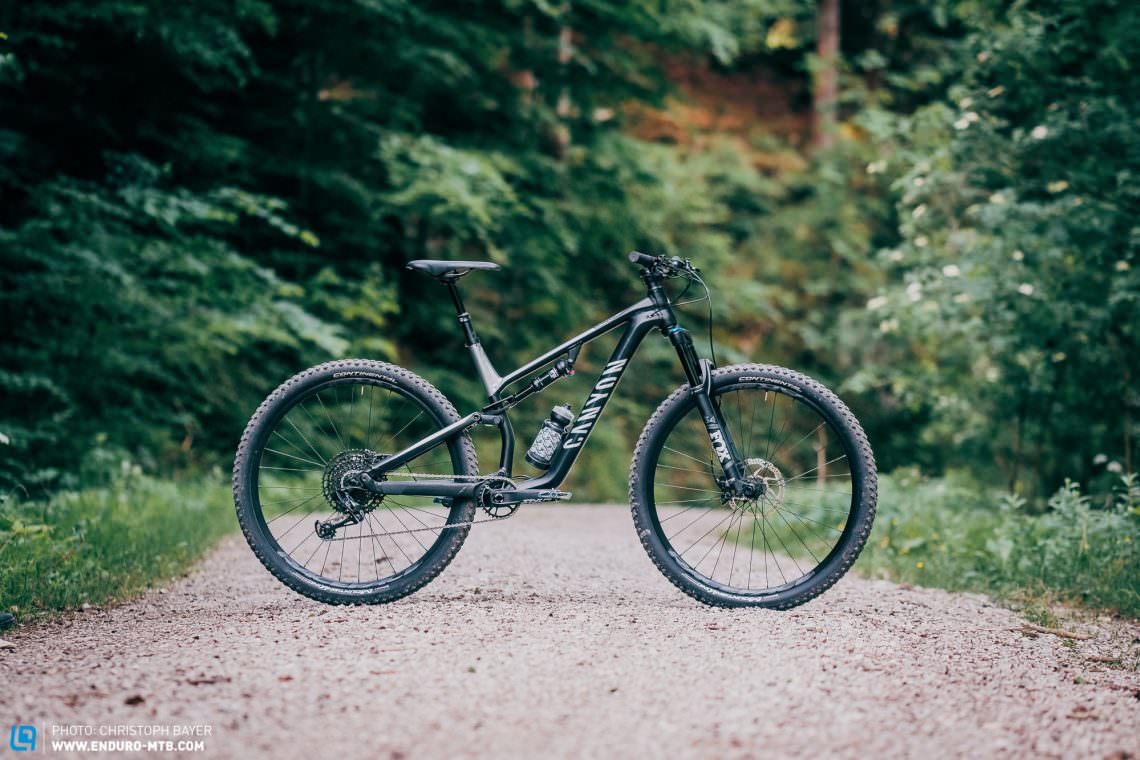
14.36 kg in size L | € 2,239 | Manfacturer’s website
At Canyon, you get a lot of bike for your money. Priced at only € 2,239, the Neuron AL 7.0 is by far the most affordable bike in the test. If you’re afraid that there’s a catch, we can give you the all-clear right now. The frame makes a very high-quality impression and evidences solid workmanship.
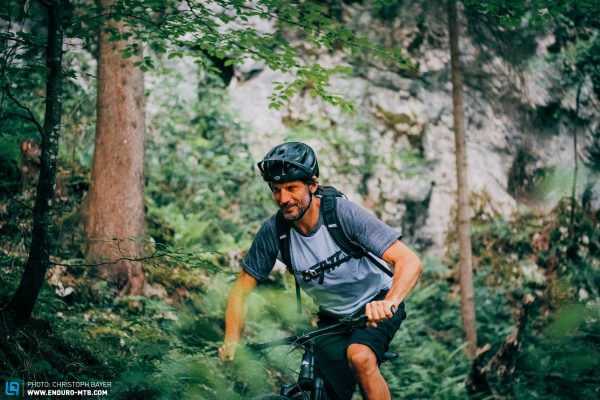
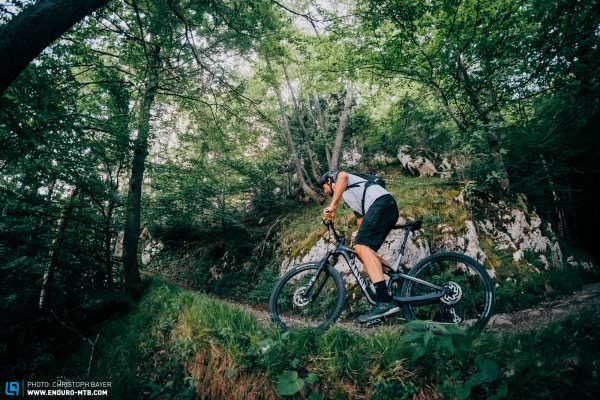
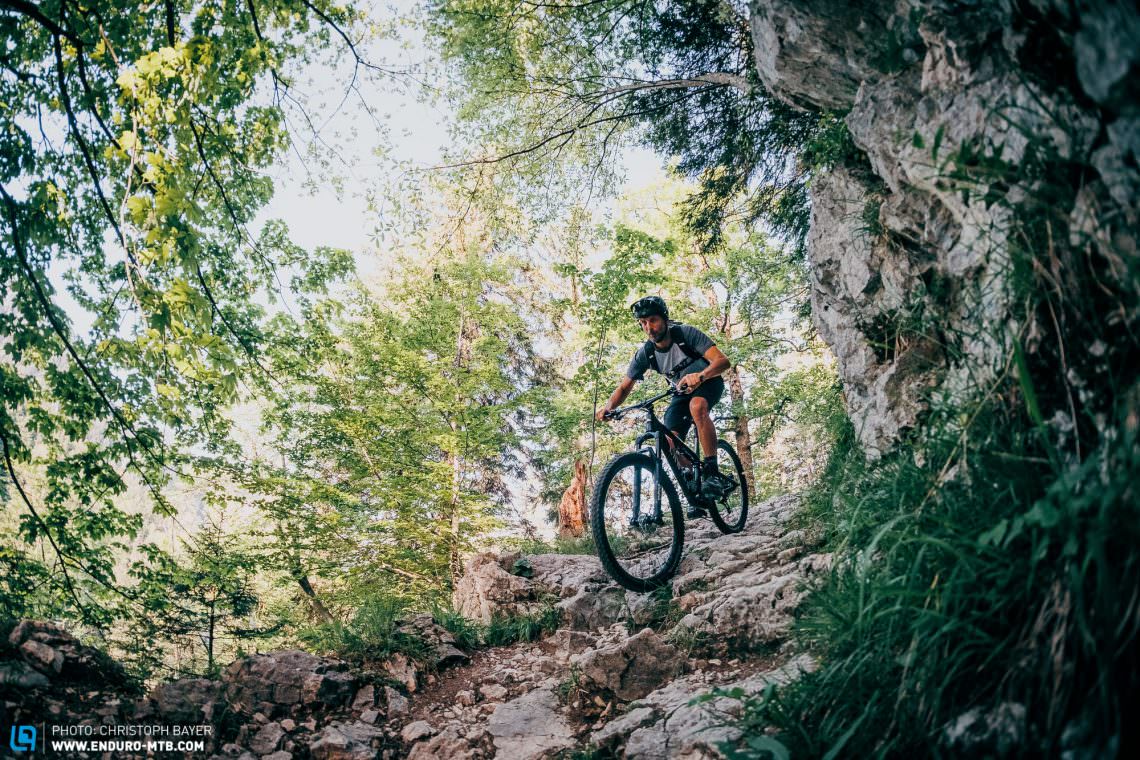
Overall, the componentry is very well thought out and leaves almost nothing to be desired. The bike comes with a 150 mm dropper seat post, 130 mm travel FOX suspension and a 1×12 drivetrain that relies on a mix of NX and GX Eagle components. Note: due to the Shimano hub, you won’t easily be able to upgrade to a GX cassette. For the brakes, Canyon rely on Shimano’s MT420 model with a four-piston calliper up front and 180 mm rotors. While the brakes offer good reliability, the force with which you’re required to pull them is relatively high due to the two-finger levers. Canyon justify their choice by wanting to offer the bike at the lowest possible price – we would have preferred them to have cut costs elsewhere. The Continental Mountain King tires are mounted on wide Race Face AR30 rims, which are built up around Shimano hubs. Unfortunately, the spokes of the rear wheel started coming loose on the first laps of our test bike, as happened during our previous test in Barcelona.
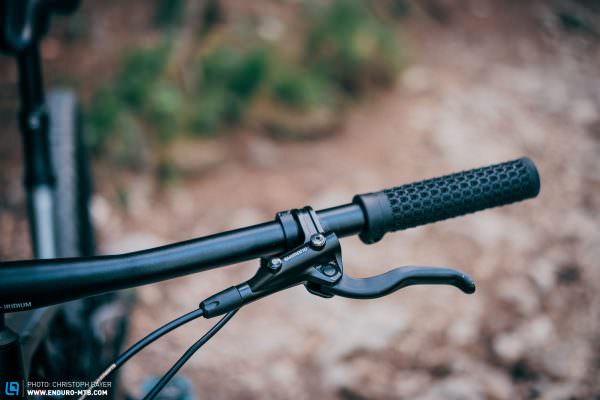
The Shimano brakes offer consistent deceleration but they lack bite because of the two-finger levers. We would have preferred Canyon to have saved some money on the derailleur and specced better brake levers.
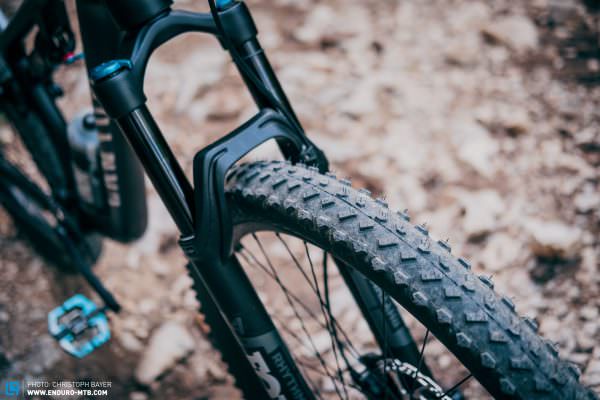
The Continental Mountain King doesn’t excel in any specific area but it’s a good all-rounder. It only lacks grip in wet conditions.

Anyone who has had their eye on the Neuron AL 7.0 for some time will be surprised to see the price increase. Canyon justify this with significantly increased transportation costs due to the Corona crisis.
Canyon Neuron AL 7.0
€ 2,239
Specifications
Fork FOX 34 Rhythm 130 mm
Rear Shock FOX FLOAT DPS Performance 130 mm
Seatpost Iridium Dropper 150 mm
Brakes Shimano MT420 180/180 mm
Drivetrain SRAM GX/NX 30 (11-50)
Stem Iridium 60 mm
Handlebar Iridium Flatbar 760 mm
Wheelset Race Face AR30/Shimano MT400 29
Tires Continental Mountain King III 2.3"
Technical Data
Size XS S M L XL
Weight 14.36 kg
Specific Features

The rear suspension of the Neuron AL delivers a convincing performance throughout. Efficient, sensitive and with sufficient reserves. Brilliant!
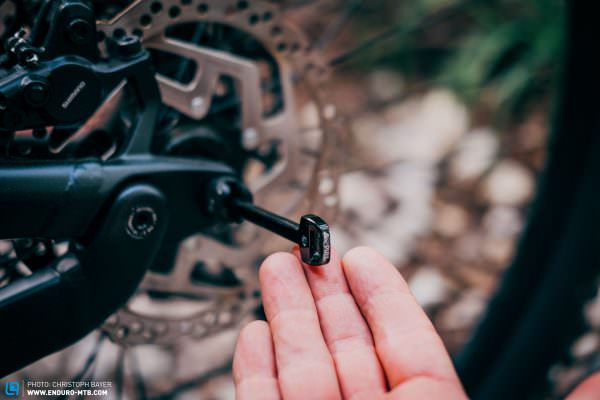
The lever of the thru-axle is nicely hidden away when not in use.
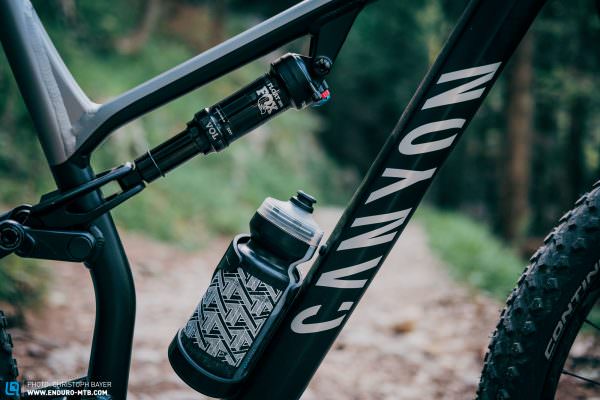
There’s a lot of room for a large water bottle in the size L Neuron. This is ideal for long rides.

The geometry of the Canyon Neuron AL 7.0
The Canyon Neuron relies on balanced geometry with none of the individual values standing out as particularly radical. The entire bike was designed and built not only to perform well in various different scenarios but also to please any type of rider. The 453 mm reach is rather compact and the head and seat tube angles are on the more conservative side of the spectrum. The most noticeable aspect is the low bottom bracket, which positions the rider very centrally on the bike. The Neuron is available in five sizes from XS–XL. The two smallest sizes come with 27.5″ wheels while the rest roll on 29” hoops.
| Size | XS | S | M | L | XL |
|---|---|---|---|---|---|
| Seat tube | 400 mm | 400 mm | 445 mm | 480 mm | 520 mm |
| Top tube | 559 mm | 581 mm | 603 mm | 626 mm | 654 mm |
| Head tube | 90 mm | 100 mm | 100 mm | 112 mm | 143 mm |
| Head angle | 67.0° | 67.0° | 67.5° | 67.5° | 67.5° |
| Seat angle | 74.5° | 74.5° | 74.5° | 74.5° | 74.5° |
| Chainstay | 430 mm | 430 mm | 440 mm | 440 mm | 440 mm |
| Wheelbase | 1,122 mm | 1,146 mm | 1,166 mm | 1,190 mm | 1,222 mm |
| Reach | 398 mm | 418 mm | 433 mm | 453 mm | 473 mm |
| Stack | 579 mm | 589 mm | 612 mm | 623 mm | 651 mm |

Shoes Specialized 2FO Cliplite | Backpack EVOC STAGE 12L
As soon as you climb aboard the Neuron AL, you’ll notice that this is a bike with which you can really rack up the miles. It accelerates smoothly and efficiently and you can hardly feel the rear end bob as you pedal uphill, saving you the effort of reaching for the climb switch. We recommend pushing the saddle forward to better position your weight for steep sections. Speaking of the saddle, it tapers off to the side, which makes it uncomfortable. On technical climbs, the Neuron remains easy to control and offers lots of traction.
Good-natured, light-footed, predictable – nothing extraordinary, just a good bike!
Despite its rather conservative geometry, the Neuron AL is loads of fun on the descents. The rear suspension certainly plays a very large part in this. It responds sensitively while providing good mid-stroke support and just the right amount of progression. This means that the Neuron generates a lot of traction without absorbing too much of the rider’s input, allowing you to catch air when the opportunity arises. The handling is good-natured and agile. At high speed in demanding terrain, the Neuron doesn’t feel nervous but it will tell you when it’s time to get on the brakes. You’ll feel right at home on the bike the moment you get on. The Neuron behaves very predictably through corners, with handling that is intuitive and good-natured. Thanks to the low bottom bracket, you feel nicely integrated between the large wheels and the Neuron instils you with confidence even on steep terrain. However, the Neuron AL 7.0 needs more powerful brakes – the braking power is consistent but you need to pull the levers really hard.
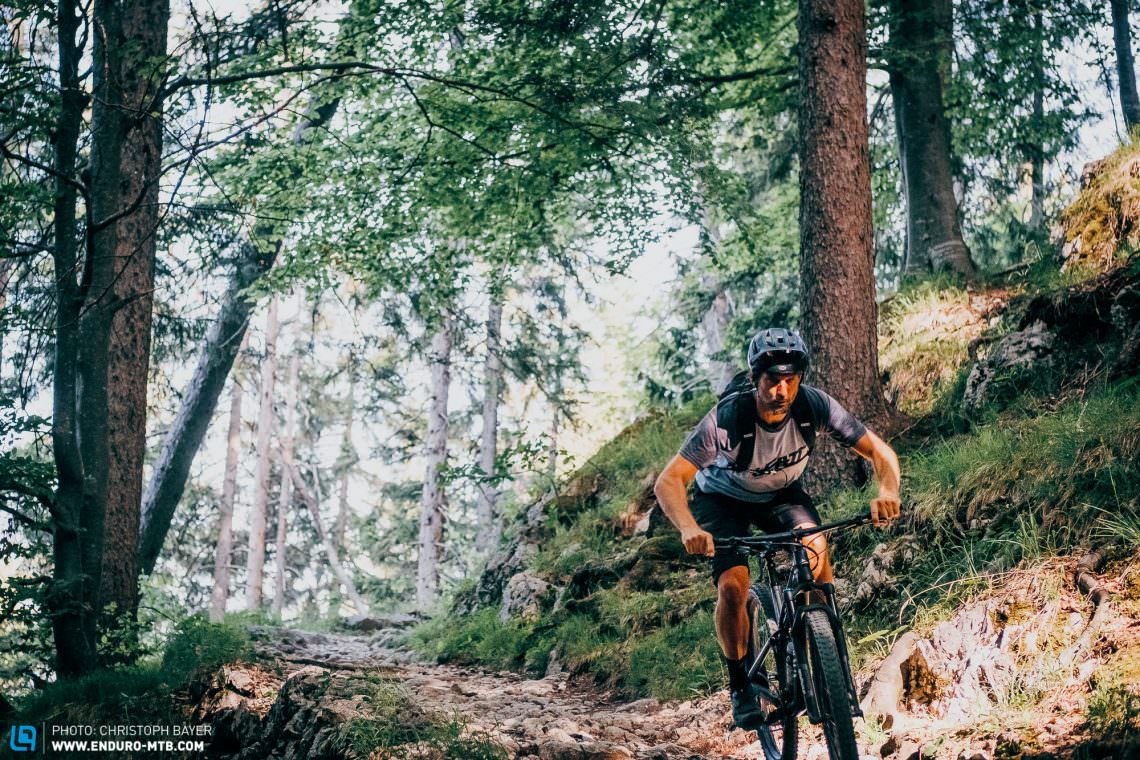
How does the Canyon Neuron AL handle compared to the competition?
The Canyon Neuron is one of the best all-rounders on test. It climbs with confidence and offers a good compromise between the efficiency of the ROSE GROUND CONTROL and the comfort of the Trek Fuel EX. Together with the YT IZZO, this bike is right up there with the best climbers. When it comes to the downhills, its all-rounder nature is its greatest strength. The Neuron is not as direct as the MERIDA ONE-Twenty but it’s also more comfortable and versatile.


Tuning tips: replace tires and saddle if necessary
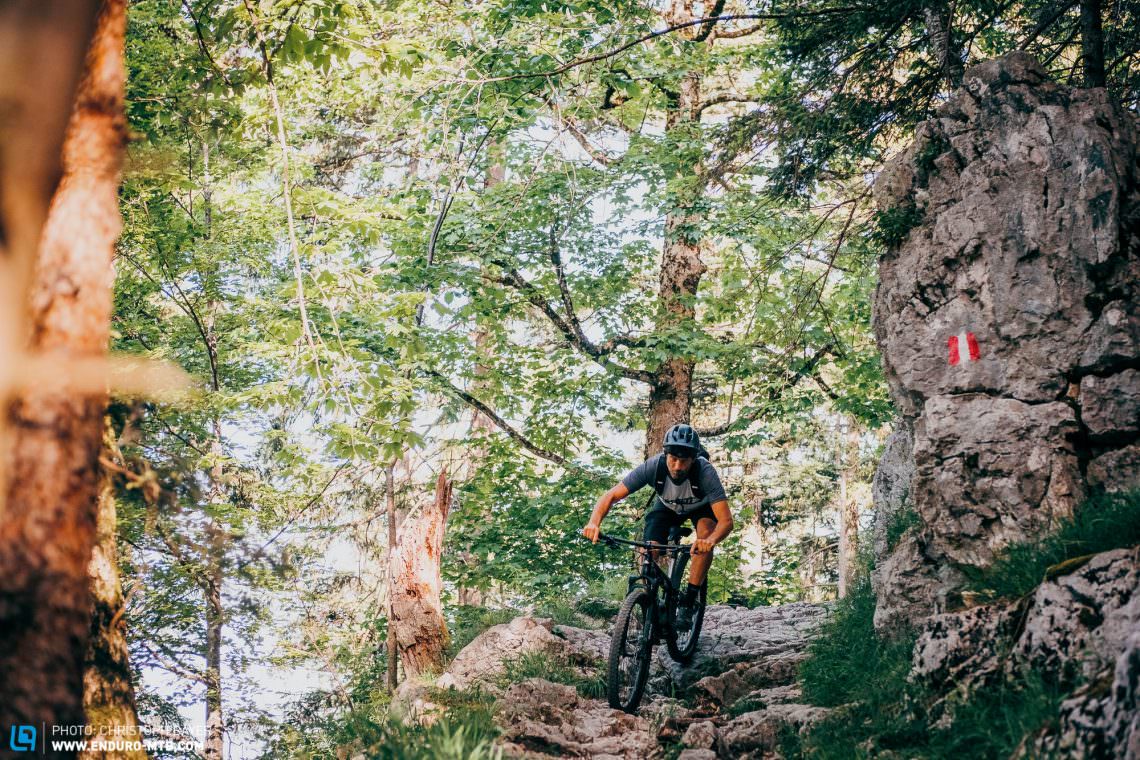
Conclusion
If your budget is limited and you can’t or don’t want to spend more than € 2,300, the Canyon Neuron AL 7.0 is an excellent trail bike with a wide range of uses. It’s very comfortable, with good pedalling efficiency and fun handling on the descents. Regarding the spec, you have to make compromises at this price point.
Tops
- predictable handling
- excellent value for money
- very comfortable
- excellent rear suspension
Flops
- uncomfortable saddle
- brakes lack power
- spokes loosened on the rear wheel
You can find out more about at canyon.com
The test field
Click here for an overview of the the best trail bike under € 3,200 € in review
All bikes in test: Canyon Neuron AL 7.0 | FOCUS JAM 6.8 NINE (Click for review) | GIANT Trance 29 1 (Click for review) | MERIDA ONE-TWENTY 9.700 (Click for review) | ROSE GROUND CONTROL 3 (Click for review) | SCOTT Genius 950 (Click for review) | Specialized Stumpjumper ST COMP (Click for review) | Trek Fuel EX 8 XT (Click for review) | YT IZZO COMP (Click for review)
Did you enjoy this article? If so, we would be stoked if you decide to support us with a monthly contribution. By becoming a supporter of ENDURO, you will help secure a sustainable future for high-quality mountain bike journalism. Click here to learn more.
Words & Photos:









